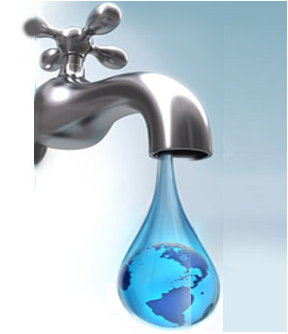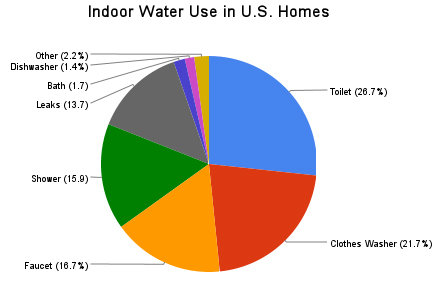Overview

For us humans, fresh water is the most important thing on the planet. Yet close to 900 million people worldwide don’t have enough, and 36 U.S. states are currently facing a shortage. Southern California is currently under drought conditions. 50% of the energy Los Angeles consumes is used to pump water from northern California.
The good news is every little bit helps, and it’s pretty easy to cut back on your water usage. The even better news is this: the average household spends $400-600 on water-heating, which is in addition to about $300 on water bills per year. Cut back on hot water and you can kill two birds with one stone. Water heating is the second largest consumer of energy in the American household (averaging 13% of household energy consumption), second only to space heating and cooling (49% of household consumption). There are some easy ways to reduce your consumption without giving your hot water system a total overhaul, and without sacrificing modern conveniences.
2. The Basics
It’s a great idea to minimize water usage overall as much as possible, but important to bear in mind that in the case of hot water, energy savings go hand in hand with water conservation. So if it’s high utility bills you’re concerned about, it’s most economical to focus on reducing hot water consumption. That holds true even if savings in gallons might not be gigantic, because, over time, the kilowatt-hours, dollars and cents you save will add up.
You can reduce hot water consumption by using a new, energy efficient dishwasher which uses about 1/6 the water as washing dishes by hand, washing clothes on the “cold” setting in a front-load or efficient top-load washing machine, and by installing low-flow shower-heads and aerators for your faucets.
That said, the average American uses about 100 gallons of water daily. At about 5 gallons per flush, 20 per shower, 5-10 per minute watering the lawn, 15 per person per day with kitchen and bathroom faucets, and maybe a half-gallon ingested, it all adds up pretty quickly.
Of that 100 gallons – per person, per day, remember – about 70% is used indoors.

Some of this water use can’t be helped. You should, of course, drink plenty of water, and it’s much more efficient to drink it out of the tap than from a bottle (it can take as much as 7 gallons of water to produce one bottle, and up to 2,000x the amount of energy to produce a bottle of water as the same amount of tap water). But 26.7% (about 19 gallons) of our indoor water – good, clean, drinking water – is being flushed down toilets?
3. Taking It On
Step one, make a couple of pretty easy adjustments to reduce wasteful spending of water and energy. These could be anything from fixing a leaky toilet, to insulating your water heater and pipes, to making an upgrade to efficient appliances and fixtures – dual-flush toilets, an efficient clothes-washer and dishwasher, low-flow shower heads, and aerators for your faucets.
Old toilets, for example, might use 4-5 gallons per flush, compared to 1.5-2 gallons for efficient new toilets. Efficient, front-load clothes washers use only 23 gallons per load, compared to about 41 gallons for traditional washers. A shower with a traditional shower head might run at 4 gallons per minute or more, while the newest low-flow shower heads can use as little as 1.5. Whatever steps you choose to take, be comforted that minor adjustments can have a major impact on the global water supply, the health of our environment, and your wallet.
The Building Doctors can test each of your fixtures to determine their flow rate and make recommendations from there.
